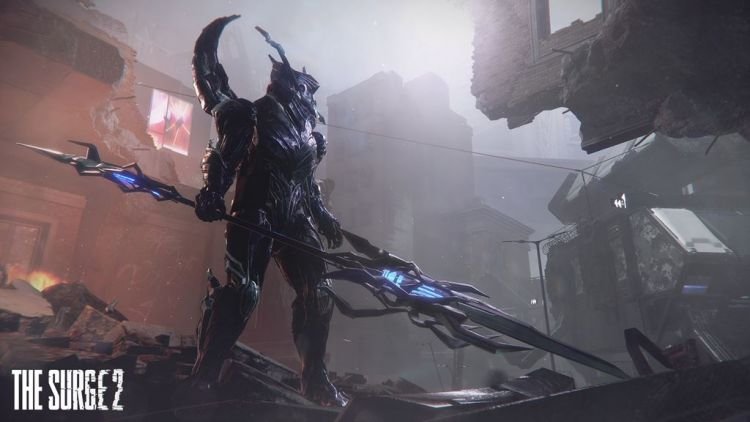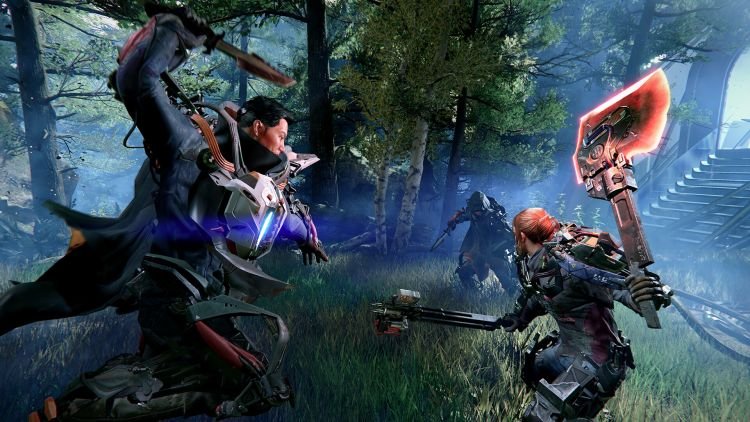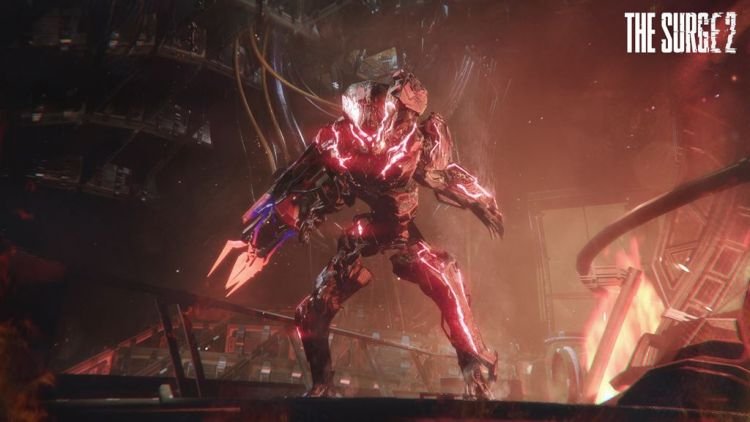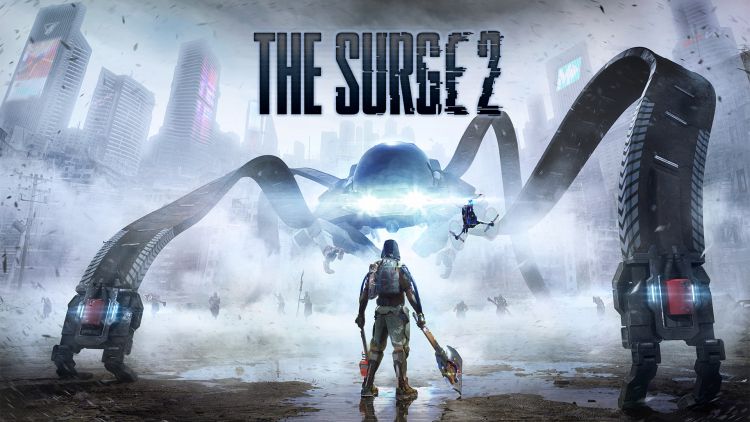When Deck 13 and Focus Home Interactive announced they were working on the sequel to one of my favorite games of 2017, I was ecstatic. While The Surge didn’t set any charts ablaze, it was a solid entry into the Soulslike genre and it did what no other game in the genre did; it dropped the fantasy and introduced a science fiction setting. While I love as fantasy had been done to death and back. This time around, the team behind the game has taken what made the first game decent and set out to improve on it. The question is, did they succeed?
Game Name: The Surge 2
Platform(s): PC (reviewed), Also on PS4 and Xbox One
Publisher(s): Focus Home Interactive
Developer(s): Deck 13
Release Date: September 19, 2019
Price: $59.99
Let me start by saying this review is long overdue, I admit that. However, the review code we received and the retail version had issues and Deck 13 had already assured me they were releasing a patch to address those. I didn’t want to review the game until that patch dropped, so I stopped my current playthrough. Thankfully, the patch did address many of the problems I had with the initial release of the game.

The Surge 2 picks up after the events of the first game, right after Warren had battled against the Rogue Process. Funny story about that, it doesn’t matter when ending you received in the first game, as they ultimately result in the Rogue Process not being eliminated, and it remains unchecked. Fast forward to the start of The Surge 2 that opens with an airplane plummeting from the sky and crashing near Jericho City. You so happened to be on that airplane and when you awaken you find yourself in a prison, lots of crazy stuff happening and your life is in danger. This all leads into an elaborate story that Deck 13 has crafted, which starts interesting but throughout the game, I lost interest in it. Outside of the main quest, several side quests introduce side characters but they don’t contribute to the main story. Many of which were forgettable and didn’t make me care about their plight what so ever. Unlike the first game, where you encounter fewer characters but added to the ongoing story. There’s a story here, I just didn’t care for it much.
Hmm, Upgrades
It’s safe to say that Deck 13 learned quite a bit from their previous entries. As such, the combat found here has been refined since the first outing and I found it be a bit faster. Attacking was quicker, even while wielding heavy weapons, though still clunky at times. While dodging was also a bit faster, allowing me to evade most attacks aimed at me. Unless it was during a boss fight and they somehow had ultra-precise tracking. Going back to the first game then coming back to the sequel, the changes are easily apparent. Then there’s the addition of the direction blocking. I’m being honest here but I rarely used this ability. Sure, it provides a risk and reward system by providing a chance to stagger an enemy if you pull off a successful block. Yet, most of the time I found myself just holding the block button or dodging out of most attacks. The only time I fully utilized it was doing boss battles, and only when I was sure I’d pull it off properly. Don’t get me wrong, if you master the directional blocking, the game gets a bit easier. I just found it easy to step to the side or back out entirely during combat.
The combat isn’t the only thing that’s changed either. Your little helper, aka “The Drone” is also back and it’s a lot more useful than it was in the first game. Not only did they change how the drone is utilized, but it also has a lot more ranged offensive and crowd control abilities. You can outfit it with lasers, assault rifles, and other useful items. All of which helps keep you out of harm’s way, as long as you don’t forget to utilize them. You can easily cheese your way through the game using the drone, not that I see that as an issue. Just pay attention to the S&R, or search and rescue function, which returns you to your last save any REMOVES all your scrap.

Ripping off the body parts and limbs of your enemies has also made a return and is the main way to farm for parts to craft new gear or upgrading existing gear. Just target a body part or limb and hack away at it until it’s ready to be removed. However, this time around there’s an armor indicated that depletes the more you damage that specific part. So you can see what part has been damaged the most, and which one you need to concentrate on. This includes every enemy in the game, bosses included. There’s still some caution here to be had, as stronger enemies will keep on attacking you even if you do manage to decapitate a body part.
There’s plenty of weapons and gear available, some of which you’ll never even use. Still, it’s nice to see such a large assortment of chaos causing gear to choose from. I eventually found about 4 weapons that I just kept upgrading and only because they looked really cool. The same with my gear. Sadly, this also meant that you aren’t encouraged to upgrade frequently if what you’re currently using works just fine. I imagine this could change during my New Game playthrough.
For those wondering if the game is stuck inside a giant complex, with areas that look the same no matter where you go. That answer is a resounding, no. Deck 13 heard the complaints and The Surge 2 takes place in a city that has more than enough areas and mixed locations that you won’t see the same place twice.
How does it run?
Performance-wise, the game ran fine on my testing setup that consists of a Ryzen 1800x + B350 motherboard, Nvidia RTX 2080 Super and 16GB of ram. Thanks to the upgrade Fledge Game Engine, the game for the most part held at a respectful 60FPS at both 1080p and 1440p. There were some drops during sections when the game loaded into a new area or when a lot was going on the screen, but barely noticeable unless you had a framerate counter up.
As I played it on the PC, as I do most games I review, I will now break down the PC-centric features. So, I’ll just say that everything is here, including the kitchen sink. Deck 13 has left out nothing, allow you to tweak the game to your liking. There’s plenty here, including a FOV slider, up to 4K support, up/downscaling, dynamic resolution options, antialiasing, subsurface scattering, volumetric lighting, etc. By now I’m sure you get it, they’ve left nothing out. Performance-wise, the game ran fine on my testing setup that consists of a Ryzen 1800x + B350 motherboard, Nvidia RTX 2080 Super, and 16GB of ram. Thanks to the upgrade Fledge Game Engine, the game for the most part held at a respectful 60FPS at both 1080p and 1440p. There were some drops during sections when the game loaded into a new area, Barely noticeable unless you had a framerate counter up.
What about co-op and online play?
Early on, it was teased that The Surge 2 would have some sort of multiplayer option. While there is a multiplayer system in place, it’s not what you think. Instead of being able to play co-op with other players, you instead can leave tags on the ground and walls. Similar to how you can leave messages around areas in Dark Souls. You can also set up a banner that awards other players who find it with some currency. If you were looking to jump into a game with a friend, you’re going to be disappointed.
Sadly, the camera is the game’s own worst enemy. Fighting in close-quarters is a hassle as the camera rears it’s head and makes a simple battle problematic. The targeting system still suffers from the same flaws that were present in the first game. On many occasions when I tried to target a certain limb such as an arm or leg, it would ultimately wind back on the body. Or when fighting a boss that has multiple targets, it won’t cycle through them correctly.

One thing I need to applaud Deck 13 on is how they handle going into New Game. While games in this genre will drop you into a new game, with all your accumulated gear and experience level intact, ready to do it all over again. The Surge 2 takes a different approach and recaps the beginning of the game. You know, the segment where the airplane falls from the sky and you awaken in the prison? Well in NG, you’re on the plane and are living the events before the crash. You’re provided some additional content of the story and, even if you don’t want to replay the entire game over again, this is worth checking out. In the end, if you’ve played the first game, then you know what to expect here. Deck 13 took everything that made The Surge decent, refined it, and gave us a bigger area to play in. For those who haven’t played the first but are comfortable with other Soulsborne games, they’ll enjoy The Surge 2 just as well. Outside of a few technical hiccups, I enjoyed my time with The Surge 2 and you will as well, just don’t mind the story so much.
Review Disclosure Statement: The Surge 2 was provided for review purposes. by Focus Home Interactive. For more information on how we review video games and other media/technology, please go review our Review Guideline/Scoring Policy for more info.
Affiliate Link Disclosure: One or more of the links above contain affiliate links, which means at no additional cost to you, we may receive a commission should you click through and purchase the item.
Summary
Deck 13 has taken everything that made the first game a solid Soulslike entry and has refined everything. The Surge 2 doesn’t change the game but will provide an enjoyable time for those who enjoy the genre.
-
4


